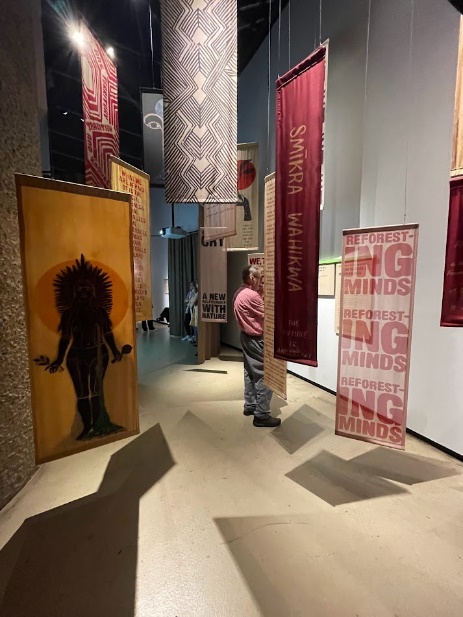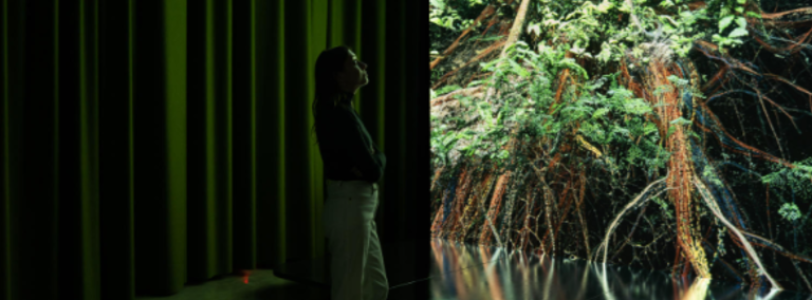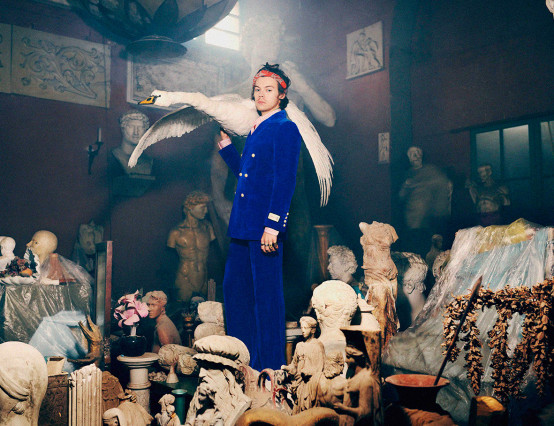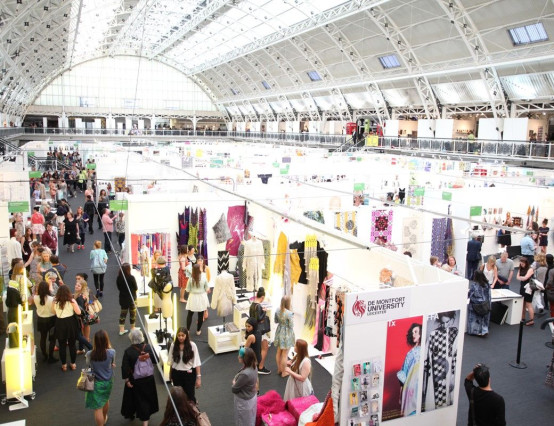This was one of my favourite exhibitions that I visited in 2022. It explored the multitude of ways that different industries are combating climate change, as well as how populations around the world are dealing with it.
one of my favourite exhibitions that I visited in 2022. It explored the multitude of ways that different industries are combating climate change, as well as how populations around the world are dealing with it.
The one part that I found particularly fascinating was the section on how the fashion industry was aiming to combat climate change. My favourite bit was the alternative materials and the ways that they thought of creating a more sustainable fashion industry. They created things such as seaweed yarn, mushroom leather and naturally dyed fabrics that used microbes in the dying process to help the longevity and vibrancy of the dye. I thought that this was amazing, particularly the mushroom leather as the exhibition explained that one of the largest natural resources in the world was a fungus that lived beneath the forest floor in the USA. It’s a root system called ‘mycelium’ and it covers three square miles. It helps produce mushrooms, which then can be used to make leather. What was also interesting in the way that they made this leather was that it could be produced on rolls, unlike animal leather, which meant that it would be easier to u se. They also talked about how they can use different methods to help reduce the carbon emissions that are produced in fashion.
se. They also talked about how they can use different methods to help reduce the carbon emissions that are produced in fashion.
Another factor that I found interesting was the way that they were developing architecture and construction techniques to become more eco-friendly. There was this one section where in the future a scientist sees the whole of the human population living in floating cities above the planet's surface, meaning that we would leave the planet's surface to grow in its natural state, to help it rejuvenate.
Another section that I loved was these banners created by indigenous communities around the world. These were almost protest art highlighting the fact that indigenous communities make up about 5% of the world’s total p opulation and yet they are the ones that are most affected by things such as deforestation and the slash-and-burn technique used when extracting Palm Oil from places such as the Amazon Rainforest. I loved these banners though as I felt they were very powerful, and an amazing way to bring awareness to this fact.
opulation and yet they are the ones that are most affected by things such as deforestation and the slash-and-burn technique used when extracting Palm Oil from places such as the Amazon Rainforest. I loved these banners though as I felt they were very powerful, and an amazing way to bring awareness to this fact.









0 Comments